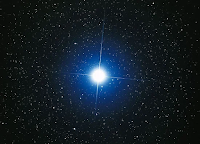The Old School of Marc Miller
As a minor follow-up to the previous post, I’ve been meaning to post this definition of what is generally thought of as “Old School play” from Marc Miller. You can read the full text of the original post on James the Geek’s blog. That is a recounting of a chat James had with the man in 2018, following a game Miller ran for James and some others, but the following sections were particularly interesting:
While playing Traveller, Marc role-plays. Very little rules. Traveller is truly a rules-light game system once you start playing. For our scenario, we generated characters by only rolling up stats. No skills. Just stats and pick your service. All rolls were made against those stats, but you couldn’t roll against the same stat again, until you had used them all. Oh, and you had to support your decision on which stat to use. After that, it was all role playing. Creating a communal story. He made it up as he went along, allowed us to build the story, and acted as “referee” just as intended. After we were through, he said “There. Now you know how I play Traveller.”
The following very much reminded me of how random generation of monsters and treasures work for me:
“Think of a world. Now think of another one. And another. After a while you run out of imagination or things get a little boring.” That’s where the world generation system steps in and helps you by creating worlds that you now have to creatively explain. Why would millions of people choose to live on a desert world with a tainted atmosphere, for example? The more I learned about his play style, and his original ideas for the game, the more it became apparent that the systems, while there to aid us, could be completely ignored (and should be) in order to simply play the game
Miller was in, if not on the ground floor then at least on the mezzanine level in the lobby and had a background in wargaming so it’s no coincidence that he shares many of the same perceptions as Gary, Dave, and various early stars of the D&D world.
Next time, I’m going to look back a bit further at another gaming referee who started a global phenomenon which is still with us: Fred T. Jane, of “Jane’s Defence Weekly” fame.




















